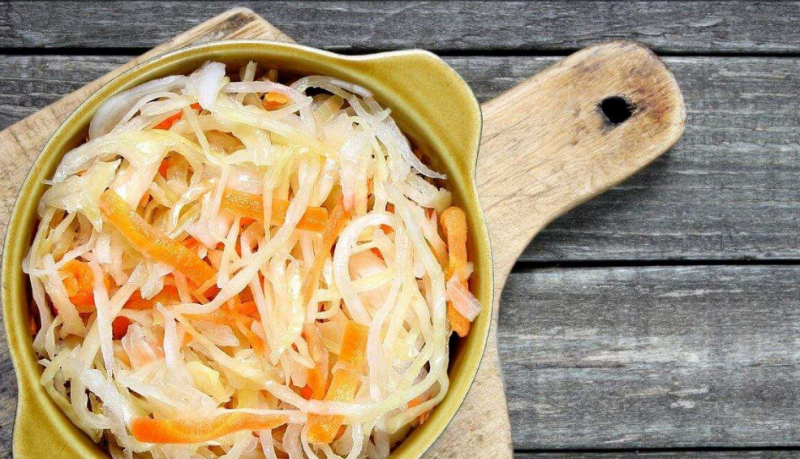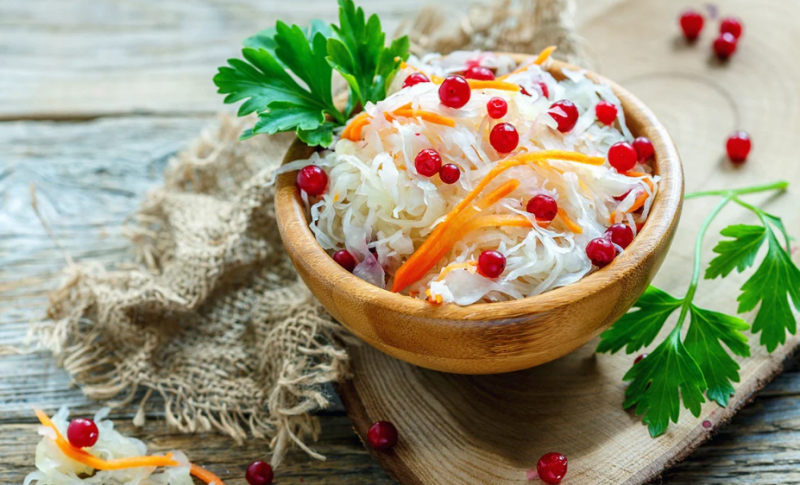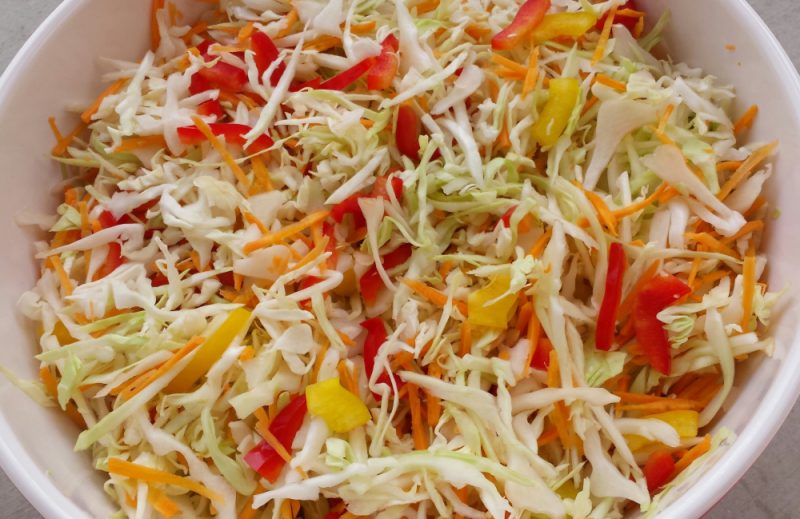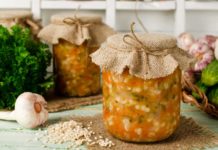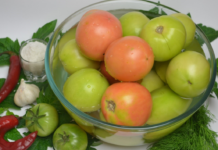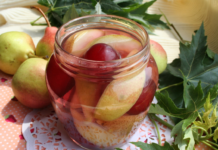Before you learn how to ferment cabbage for the winter in a bucket, you should understand what is the use of a vegetable in this form? Cabbage is rich in fiber and trace elements, which are necessary for organs and systems for normal functioning. During storage, the product loses most of the nutrients, in addition, in the winter, it noticeably hits the pocket. Save the trace elements, vitamins and money will help the starter cabbage in a bucket - an old proven method that will please the simplicity and excellent taste. After such a vegetable, you can then prepare the filling for baking, salads, vinaigrettes, add to the first and second courses.
Material Content:
- 1 How to ferment cabbage for the winter in a bucket - important nuances of cooking
- 2 Classic dry fermentation recipe
- 3 Sauerkraut recipe in a bucket with whole heads of cabbage
- 4 With the addition of cranberries and cranberries
- 5 Cold brine starter culture
- 6 Sauerkraut with tomatoes, sweet pepper and zucchini
- 7 Is it possible to salt cabbage in a plastic bucket?
How to ferment cabbage for the winter in a bucket - important nuances of cooking
Before you start harvesting the vegetable, you need to familiarize yourself with all the subtleties of the process. The main thing in this business is the choice of the main product, containers and time. Cabbage for starter culture is selected only in later varieties. It differs from the early variety in a more dense knocked-down structure, size and light color. If you pickle early cabbage, then it will become soft, lethargic and slightly appetizing during processing and insisting.
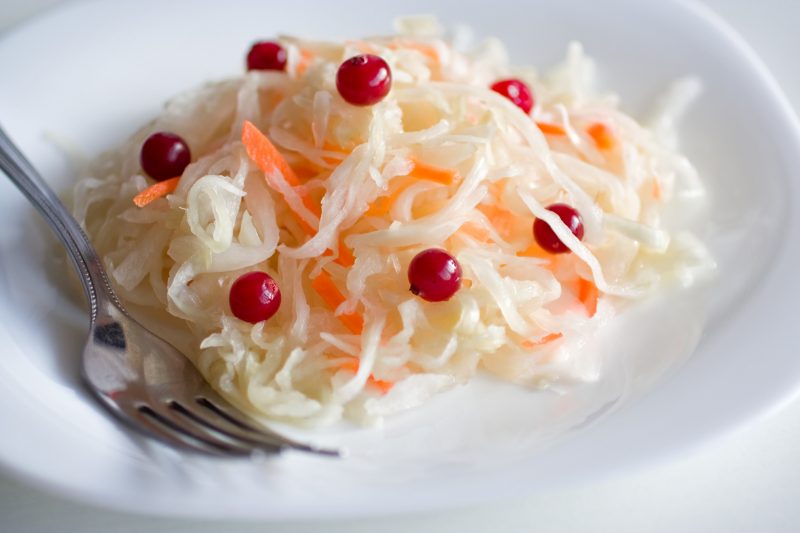
Experienced housewives advise harvesting white-headed vegetables, following the lunar calendar. The optimal period for this is considered to be the end of the first week after the new moon - if you start pickling on the waning moon, the vegetable will come out soft and peroxide. It is good to start salting after the first frost, when the cabbage gets rid of the characteristic bitterness and acquires a delicate taste in the process of fermentation.
The temperature regime in the room where the leaven takes place should not be higher than 23 degrees. After cooking, cabbage is best stored at a temperature of 0-3 degrees (in the refrigerator, pantry, on the balcony or cellar). In the process of fermentation, the vegetable must be stirred occasionally or punctured with a large skewer, in order to avoid stale product.
Classic dry fermentation recipe
Traditional sauerkraut is made from a minimal set of products - quickly simple, without requiring special culinary skills. For cooking, you will need the main ingredient in an amount of 5 kg, carrot 600 g and sugar and salt about 100 g each. Other spices are added as desired.
- Cabbage is washed and cleaned of the upper leaves.
- After the vegetable is chopped or cut with a knife.
- Carrots, peeled and washed, are rubbed on a coarse grater.
- Cabbage is salted and rubbed by hand, after which carrot and other components are added to it.
- All products fold into a large sterile container. Above you must put oppression and a clean gauze cut.
- Within 4 days, the products must be stirred, removed from the surface of the resulting foam.
- Approximately as long as cabbage is aged in a room, the air temperature in which does not exceed 8 degrees.
- After cooking, the crispy vegetable can be decomposed into small containers and put away in the cold.
This recipe is quite old - it has been salted with cabbage for a long time. Previously, vegetables were harvested in large volumes, now they are made mainly for the season. If desired, the product can be frozen.
Sauerkraut recipe in a bucket with whole heads of cabbage
An interesting recipe for whole cabbage fermentation is quite popular among lovers of this useful product.
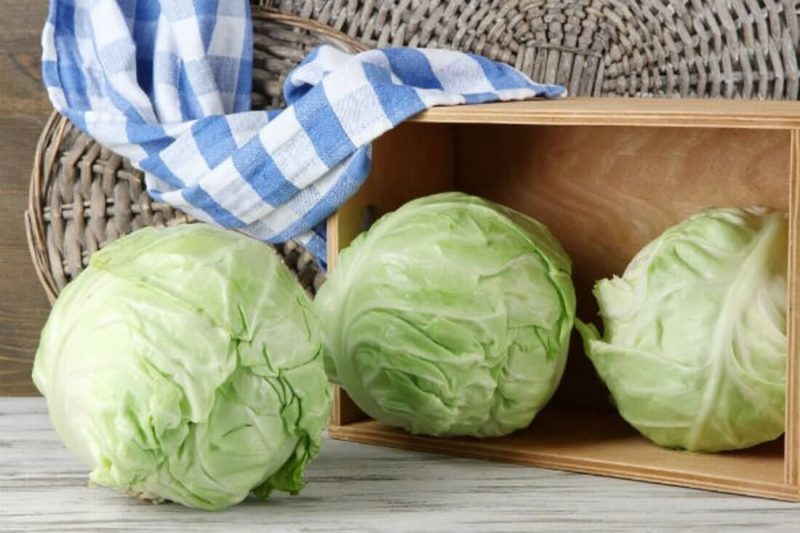
To prepare it, you should prepare:
- late cabbage - 8 kg;
- non-iodized salt - 300 g;
- water - 6 l.
The main product should be selected small, tightly knocked down, without damage. The upper leaves need to be removed (do not throw away), the vegetable should be thoroughly washed and put into prepared containers. Previously, the bottom of the tank is lined with green foliage, it is also used to cover the product.
From above, the vegetable should be filled with brine made from water and salt. After covering the product with gauze cut and oppression.
You can make salting in a different way, after blanching the vegetable. To do this, prepared white cabbage is poured with boiling salted brine and blanched on the stove for about 4 minutes. After that, it is also placed in a deep container, filled with brine, covered with gauze and oppression.
With the addition of cranberries and cranberries
An excellent snack in the winter will turn out if you pickle the cabbage in a bucket along with lingonberries and cranberries.
To do this, you should stock up in advance:
- white cabbage - 2 kg;
- cranberries - 50 g;
- lingonberries - 50 g;
- carrots - 300 g;
- dill or caraway seeds - 12 seeds;
- black pepper peas - 7 pcs.;
- granulated sugar - 120 g;
- vinegar - 500 ml;
- salt - 60 g.
It is interesting: how to cook garlic arrows for the winter
Cabbage is peeled, cut in half. After removing the stump, the product should be crushed using a special tool or knife. Next to the white variety, grated carrots, salt are added and everything is rubbed with your hands until the juice appears.
Berries are washed, cleaned of garbage and added to vegetables. Spices follow, and the dish is infused for 2.5 hours.
A fill is prepared separately, in which vinegar and water are mixed. Cabbage placed in sterile jars is poured with brine and sterilized for 15 minutes. After it can be laid out in buckets and sent to the pantry for long-term storage.
Cold brine starter culture
Crisp cabbage, known to everyone since Soviet times, was prepared in factories according to this recipe.Her taste is amazing, and the vegetable itself is juicy, crunchy, with a characteristic acidity.
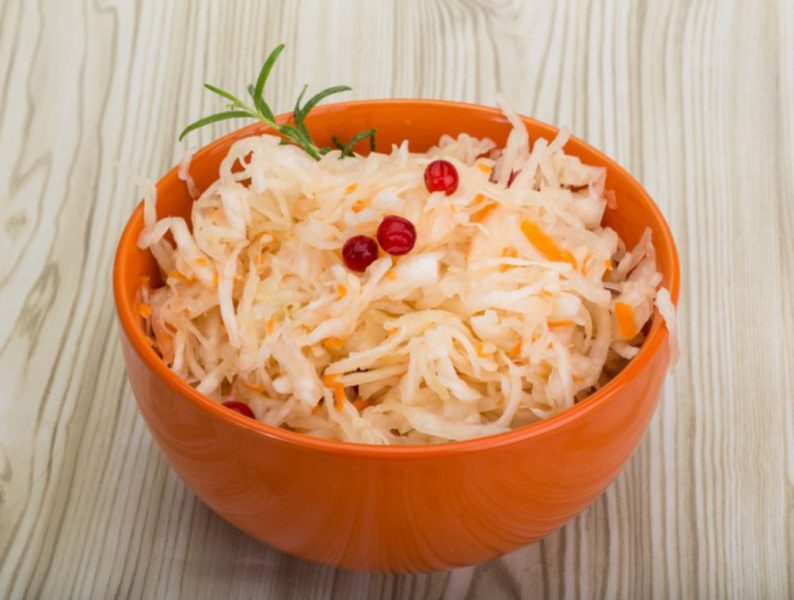
The dish is prepared according to the following recipe:
- From the cabbage, you need to remove the upper leaves, chop the head.
- Add spices to the vegetable - salt, a little caraway seeds or dill grains, pepper. It is forbidden to crush a product in this recipe.
- Then everything is laid out in a bucket and poured with brine, which is prepared from salt, granulated sugar and water. Common table salt is used - extra and iodized are not suitable for souring. To do this, the water is boiled first, salt is added there, and after cooling, pouring is used to marinate the vegetable.
In the process of cooking, cabbage must be mixed, removing the accumulated gases or pierced with a knife. At the end of the fermentation process, the vegetable is decomposed into small containers (optional) and sent to the cold.
Sauerkraut with tomatoes, sweet pepper and zucchini
To prepare a product for this recipe, you should take:
- white cabbage - 4 kg;
- tomatoes - 5 pcs.;
- sweet pepper - 6 pcs.;
- zucchini - 2 pcs.;
- carrot - 4 pcs.;
- garlic - a couple of cloves;
- dill, cilantro;
- salt - 70 g;
- water - 1 l.
The vegetable is divided into 4 equal parts and dipped in boiling salt water for a couple of minutes. Separately, grind zucchini and tomatoes, cut them into circles, grate carrots.
Boil water in a container, add salt to it, mix. After cooling, brine should pour vegetables, arranged in layers. Between each layer lies finely chopped garlic. Food should be under the oppression for about 2-4 days, after which they are placed in the cold.
Is it possible to salt cabbage in a plastic bucket?
You can ferment a vegetable in any containers - pots, jars, buckets. The main thing in choosing dishes is its cleanliness, lack of damage. Many people ask, is it possible to salt cabbage in a plastic bucket? Definitely, yes, but, according to experts in enamel containers, the vegetable will turn out to be more crispy and aromatic. It is good to use wooden tubs, but to purchase them now is quite problematic, and it is not very convenient to store them in small apartments. Do not use aluminum containers for harvesting cabbage. In contact with lactic acid that appears during the fermentation of vegetables, this material is able to oxidize, which negatively affects the structure and taste of cabbage. In addition, it is unsafe for health, so aluminum containers are categorically not.
Having learned to ferment cabbage according to the classic recipe, using cold or hot pouring, you can experiment by diluting the traditional set of products with various components - apples, honey, berries. A dish such as crisp cabbage in a bucket will be an excellent lifesaver in the winter, it will diversify the diet and strengthen the body.


